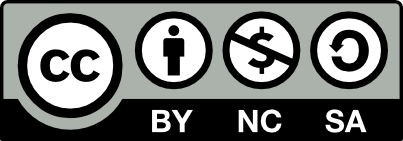Long non-coding RNA TMPO-AS1 promotes aggressive triple-negative breast cancer by sponging hsa-let-7b-5p-mediated AURKB upregulation

Aurora kinase B (AURKB), a regulator of mitosis, is associated with aggressive breast cancer (BRCA) and poor patient outcomes, although its exact role remains unclear. This study performed an in silico analysis to investigate AURKB expression, regulation, and prognostic relevance in BRCA. Differential expression of AURKB was evaluated using the University of Alabama Cancer Database (UALCAN), the Encyclopedia of RNA Interactomes (ENCORI), OncoDB, The Cancer Genome Atlas (TCGA), Gene Expression Profiling Interactive Analysis 2 (GEPIA2), and TCGAnalyzeR v1.0. Survival analysis was conducted using the Kaplan–Meier plotter database, and subtype-specific associations were examined using the TCGA portal, the Tumor-Immune System Interactions and Drug Bank database, Breast Cancer Gene- Expression Miner v5.0 (bc-GenExMinerv5.0), UALCAN, and ENCORI. AURKB’s role in biological processes and metastasis was studied using the Cancer Single-cell State Atlas, TNMplot, and ExploRRNet. Transcription factors associated with AURKB were analyzed using Enrichr, ENCORI, Tumor Immune Estimation Resource, GEPIA2, OncoDB, UALCAN, and bc-GenExMinerv5.0. MicroRNAs were examined using miRNet, Transcriptome Alterations in Cancer Omnibus, CancerMIRNome, and ENCORI, while long non-coding RNAs were studied using ENCORI, OncoDB, UALCAN, and TCGAnalyzeR v1.0. Elevated AURKB levels were linked to decreased distant metastasis-free survival (Hazard ratio [HR] = 1.71), relapse-free survival (HR = 1.43), and overall survival (HR = 1.45). AURKB transcripts also showed elevated expression in BRCA with a log2 fold change of 3.03. A novel competing endogenous RNA (ceRNA) network was identified, where AURKB correlated positively with E2F1 (r = 0.806) and TMPO-AS1 (r = 0.610) but negatively with hsa-let-7b-5p (r = −0.452). TMPO-AS1 also showed a negative correlation with hsa-let-7b-5p (r = −0.204). High E2F1 expression was associated with worse OS (HR = 1.53), whereas higher hsa-let- 7b-5p levels were linked to better prognosis (HR = 0.68). Binding affinity predictions supported interactions between hsa-let-7b-5p and AURKB, E2F1, ESR1, PGR, and TMPO-AS1 (−16.40, −90, −50, −90, and −40 kcal/mol, respectively). Overall, AURKB dysregulation through this ceRNA network may promote BRCA progression, offering potential for new prognostic biomarkers and personalized therapies.
- Łukasiewicz S, Czeczelewski M, Forma A, Baj J, Sitarz R, Stanisławek A. Breast cancer-epidemiology, risk factors, classification, prognostic markers, and current treatment strategies-an updated review. Cancers (Basel). 2021;13(17):4287. doi: 10.3390/cancers13174287
- Di Pilla A, Cozzolino MR, Mannocci A, et al. The impact of tumor boards on breast cancer care: Evidence from a systematic literature review and meta-analysis. Int J Environ Res Public Health. 2022;19(22):14990. doi: 10.3390/ijerph192214990
- Arnold M, Morgan E, Rumgay H, et al. Current and future burden of breast cancer: Global statistics for 2020 and 2040. Breast. 2022;66:15-23. doi: 10.1016/j.breast.2022.08.010
- Orrantia-Borunda E, Anchondo-Nuñez P, Acuña-Aguilar LE, Gómez-Valles FO, Ramírez-Valdespino CA. Subtypes of breast cancer. In: Mayrovitz HN, editor. Breast Cancer. Exon Publications; 2022. Available from: https://www.ncbi.nlm.nih.gov/books/NBK583808 [Last accessed on 2024 Apr 28].
- Siegel RL, Kratzer TB, Giaquinto AN, Sung H, Jemal A. Cancer statistics, 2025. CA Cancer J Clin. 2025;75(1):10-45. doi: 10.3322/caac.21871
- Obidiro O, Battogtokh G, Akala EO. Triple negative breast cancer treatment options and limitations: Future outlook. Pharmaceutics. 2023;15(7):1796. doi: 10.3390/pharmaceutics15071796
- Jiang YZ, Ma D, Suo C, et al. Genomic and transcriptomic landscape of triple-negative breast cancers: Subtypes and treatment strategies. Cancer Cell. 2019;35(3):428-440.e5. doi: 10.1016/j.ccell.2019.02.001
- Jiang YZ, Liu Y, Xiao Y, et al. Molecular subtyping and genomic profiling expand precision medicine in refractory metastatic triple-negative breast cancer: The FUTURE trial. Cell Res. 2021;31(2):178-186. doi: 10.1038/s41422-020-0375-9
- Connal S, Cameron JM, Sala A, et al. Liquid biopsies: The future of cancer early detection. J Transl Med. 2023;21:118. doi: 10.1186/s12967-023-03960-8
- Cocco S, Piezzo M, Calabrese A, et al. Biomarkers in triple-negative breast cancer: State-of-the-art and future perspectives. Int J Mol Sci. 2020;21(13):4579. doi: 10.3390/ijms21134579
- Jiang P, Sinha S, Aldape K, Hannenhalli S, Sahinalp C, Ruppin E. Big data in basic and translational cancer research. Nat Rev Cancer. 2022;22(11):625-639. doi: 10.1038/s41568-022-00502-0
- Zhou Q, Liu X, Lv M, Sun E, Lu X, Lu C. Genes that predict poor prognosis in breast cancer via bioinformatical analysis. Biomed Res Int. 2021;2021:6649660. doi: 10.1155/2021/6649660
- Malone ER, Oliva M, Sabatini PJB, Stockley TL, Siu LL. Molecular profiling for precision cancer therapies. Genome Med. 2020;12(1):8. doi: 10.1186/s13073-019-0703-1
- Varshney N, Rani A, Kashyap D, Tiwari D, Jha HC. Aurora kinase: An emerging potential target in therapeutics. In: Hassan MI, Noor S, editors. Protein Kinase Inhibitors. Ch. 10. United States: Academic Press; 2022. p. 261-322. doi: 10.1016/B978-0-323-91287-7.00028-4
- Westin SN, Sood AK, Coleman RL. Targeted therapy and molecular genetics. In: Di Saia PJ, Creasman WT, editors. Clinical Gynecologic Oncology. 18th ed., Ch. 18. United States: Mosby; 2012:539-560.e6. doi: 10.1016/B978-0-323-07419-3.00018-7
- Pérez-Fidalgo JA, Gambardella V, Pineda B, Burgues O, Piñero O, Cervantes A. Aurora kinases in ovarian cancer. ESMO Open. 2020;5(5):e000718. doi: 10.1136/esmoopen-2020-000718
- Serrano-del Valle A, Reina-Ortiz C, Benedi A, Anel A, Naval J, Marzo I. Future prospects for mitosis-targeted antitumor therapies. Biochem Pharmacol. 2021;190:114655. doi: 10.1016/j.bcp.2021.114655
- Borah NA, Reddy MM. Aurora Kinase B inhibition: A potential therapeutic strategy for cancer. Molecules. 2021;26(7):1981. doi: 10.3390/molecules26071981
- Pradhan T, Gupta O, Singh G, Monga V. Aurora kinase inhibitors as potential anticancer agents: Recent advances. Eur J Med Chem. 2021;221:113495. doi: 10.1016/j.ejmech.2021.113495
- Wang Z, Yu Z, Wang GH, et al. AURKB promotes the metastasis of gastric cancer, possibly by inducing EMT. Cancer Manag Res. 2020;12:6947-6958. doi: 10.2147/CMAR.S254250
- Zhang J, Ma J, Li Y, et al. Overexpression of aurora kinase B is correlated with diagnosis and poor prognosis in hepatocellular carcinoma. Int J Mol Sci. 2024;25(4):2199. doi: 10.3390/ijms25042199
- Liu M, Li Y, Zhang C, Zhang Q. Role of aurora kinase B in regulating resistance to paclitaxel in breast cancer cells. Hum Cell. 2022;35(2):678-693. doi: 10.1007/s13577-022-00675-8
- Cheng B, Chen J, Katalina V, et al. Targeting PKC as a therapeutic strategy to overcome chemoresistance in TNBC by restoring aurora kinase B expression. J Cell Mol Med. 2025;29(6):e70464. doi: 10.1111/jcmm.70464
- Chung S, Sperier E, Graciano K, Hu X, Guo H, Xu J. Aurora kinases, emerging critical targets for cancer treatment and related new therapeutic strategies. Bioorganic Chem. 2025;163:108633. doi: 10.1016/j.bioorg.2025.108633
- Salmena L, Poliseno L, Tay Y, Kats L, Pandolfi PP. A ceRNA hypothesis: The rosetta stone of a hidden RNA language? Cell. 2011;146(3):353-358. doi: 10.1016/j.cell.2011.07.014
- Li T, Fu J, Zeng Z, et al. TIMER2.0 for analysis of tumor-infiltrating immune cells. Nucleic Acids Res. 2020;48(W1):W509-W514. doi: 10.1093/nar/gkaa407
- Chandrashekar DS, Bashel B, Balasubramanya SAH, et al. UALCAN: A portal for facilitating tumor subgroup gene expression and survival analyses. Neoplasia. 2017;19(8):649-658. doi: 10.1016/j.neo.2017.05.002
- Deng M, Brägelmann J, Kryukov I, Saraiva-Agostinho N, Perner S. FirebrowseR: An R client to the Broad Institute’s Firehose Pipeline. Database. 2017;2017:baw160. doi: 10.1093/database/baw160
- Ru B, Wong CN, Tong Y, et al. TISIDB: An integrated repository portal for tumor-immune system interactions. Bioinformatics. 2019;35(20):4200-4202. doi: 10.1093/bioinformatics/btz210
- Li JH, Liu S, Zhou H, Qu LH, Yang JH. starBase v2.0: Decoding miRNA-ceRNA, miRNA-ncRNA and protein–RNA interaction networks from large-scale CLIP-Seq data. Nucleic Acids Res. 2014;42(D1):D92-D97. doi: 10.1093/nar/gkt1248
- Tang G, Cho M, Wang X. OncoDB: An interactive online database for analysis of gene expression and viral infection in cancer. Nucleic Acids Res. 2022;50(D1):D1334-D1339. doi: 10.1093/nar/gkab970
- Tang Z, Kang B, Li C, Chen T, Zhang Z. GEPIA2: An enhanced web server for large-scale expression profiling and interactive analysis. Nucleic Acids Res. 2019;47(W1):W556-W560. doi: 10.1093/nar/gkz430
- Zengin T, Masud BA, Önal-Süzek T. TCGAnalyzeR: An online pan-cancer tool for integrative visualization of molecular and clinical data of cancer patients for cohort and associated gene discovery. Cancers (Basel). 2024;16(2):345. doi: 10.3390/cancers16020345
- Győrffy B. Transcriptome-level discovery of survival-associated biomarkers and therapy targets in non-small-cell lung cancer. Br J Pharmacol. 2024;181(3):362-374. doi: 10.1111/bph.16257
- Jézéquel P, Gouraud W, Ben Azzouz F, et al. bc-GenExMiner 4.5: New mining module computes breast cancer differential gene expression analyses. Database (Oxford). 2021;2021:baab007. doi: 10.1093/database/baab007
- Yuan H, Yan M, Zhang G, et al. CancerSEA: A cancer single-cell state atlas. Nucleic Acids Res. 2019;47(D1):D900-D908. doi: 10.1093/nar/gky939
- Kuleshov MV, Jones MR, Rouillard AD, et al. Enrichr: A comprehensive gene set enrichment analysis web server 2016 update. Nucleic Acids Res. 2016;44(W1):W90-W97. doi: 10.1093/nar/gkw377
- Chen EY, Tan CM, Kou Y, et al. Enrichr: Interactive and collaborative HTML5 gene list enrichment analysis tool. BMC Bioinformatics. 2013;14(1):128. doi: 10.1186/1471-2105-14-128
- Bartha Á, Győrffy B. TNMplot.com: A web tool for the comparison of gene expression in normal, tumor and metastatic tissues. Int J Mol Sci. 2021;22(5):2622. doi: 10.3390/ijms22052622
- Tsherniak A, Vazquez F, Montgomery PG, et al. Defining a cancer dependency map. Cell. 2017;170(3):564-576.e16. doi: 10.1016/j.cell.2017.06.010
- Chang L, Zhou G, Soufan O, Xia J. miRNet 2.0: Network-based visual analytics for miRNA functional analysis and systems biology. Nucleic Acids Res. 2020;48(W1):W244-W251. doi: 10.1093/nar/gkaa467
- Chou PH, Liao WC, Tsai KW, Chen KC, Yu JS, Chen TW. TACCO, a database connecting transcriptome alterations, pathway alterations and clinical outcomes in cancers. Sci Rep. 2019;9(1):3877. doi: 10.1038/s41598-019-40629-z
- Li R, Qu H, Wang S, et al. CancerMIRNome: an interactive analysis and visualization database for miRNome profiles of human cancer. Nucleic Acids Res. 2022;50(D1):D1139-D1146. doi: 10.1093/nar/gkab784
- Tong Y, Ru B, Zhang J. miRNACancerMAP: An integrative web server inferring miRNA regulation network for cancer. Bioinformatics. 2018;34(18):3211-3213. doi: 10.1093/bioinformatics/bty320
- Lawarde A, Sharif Rahmani E, Nath A, et al. ExplORRNet: An interactive web tool to explore stage-wise miRNA expression profiles and their interactions with mRNA and lncRNA in human breast and gynecological cancers. Noncoding RNA Res. 2024;9(1):125-140. doi: 10.1016/j.ncrna.2023.10.006
- Liu CJ, Hu FF, Xie GY, et al. GSCA: An integrated platform for gene set cancer analysis at genomic, pharmacogenomic and immunogenomic levels. Brief Bioinform. 2023;24(1):bbac558. doi: 10.1093/bib/bbac558
- Qattan A, Al-Tweigeri T, Suleman K, Alkhayal W, Tulbah A. Advanced insights into competitive endogenous RNAs (ceRNAs) regulated pathogenic mechanisms in metastatic triple-negative breast cancer (mTNBC). Cancers (Basel). 2024;16(17):3057. doi: 10.3390/cancers16173057
- Yilmaz A, Ari Yuka S. The role of ceRNAs in breast cancer microenvironmental regulation and therapeutic implications. J Mol Med. 2025;103(1):33-49. doi: 10.1007/s00109-024-02503-y
- Yin L, Duan JJ, Bian XW, Yu SC. Triple-negative breast cancer molecular subtyping and treatment progress. Breast Cancer Res. 2020;22(1):61. doi: 10.1186/s13058-020-01296-5
- Vats P, Saini C, Baweja B, et al. Aurora kinases signaling in cancer: From molecular perception to targeted therapies. Mol Cancer. 2025;24(1):180. doi: 10.1186/s12943-025-02353-3
- Komar D, Juszczynski P. Rebelled epigenome: Histone H3S10 phosphorylation and H3S10 kinases in cancer biology and therapy. Clin Epigenet. 2020;12(1):147. doi: 10.1186/s13148-020-00941-2
- Aquino-Acevedo AN, Orengo-Orengo JA, Cruz-Robles ME, Saavedra HI. Mitotic kinases are emerging therapeutic targets against metastatic breast cancer. Cell Div. 2024;19(1):21. doi: 10.1186/s13008-024-00125-x



